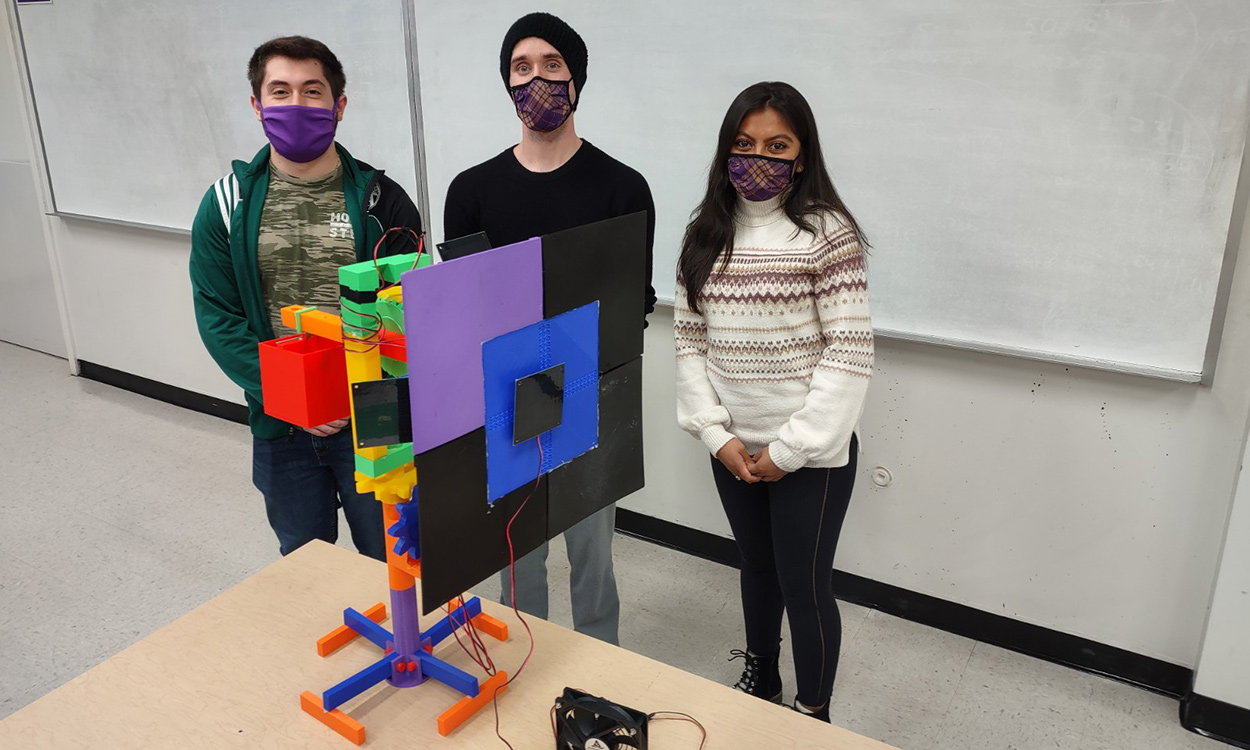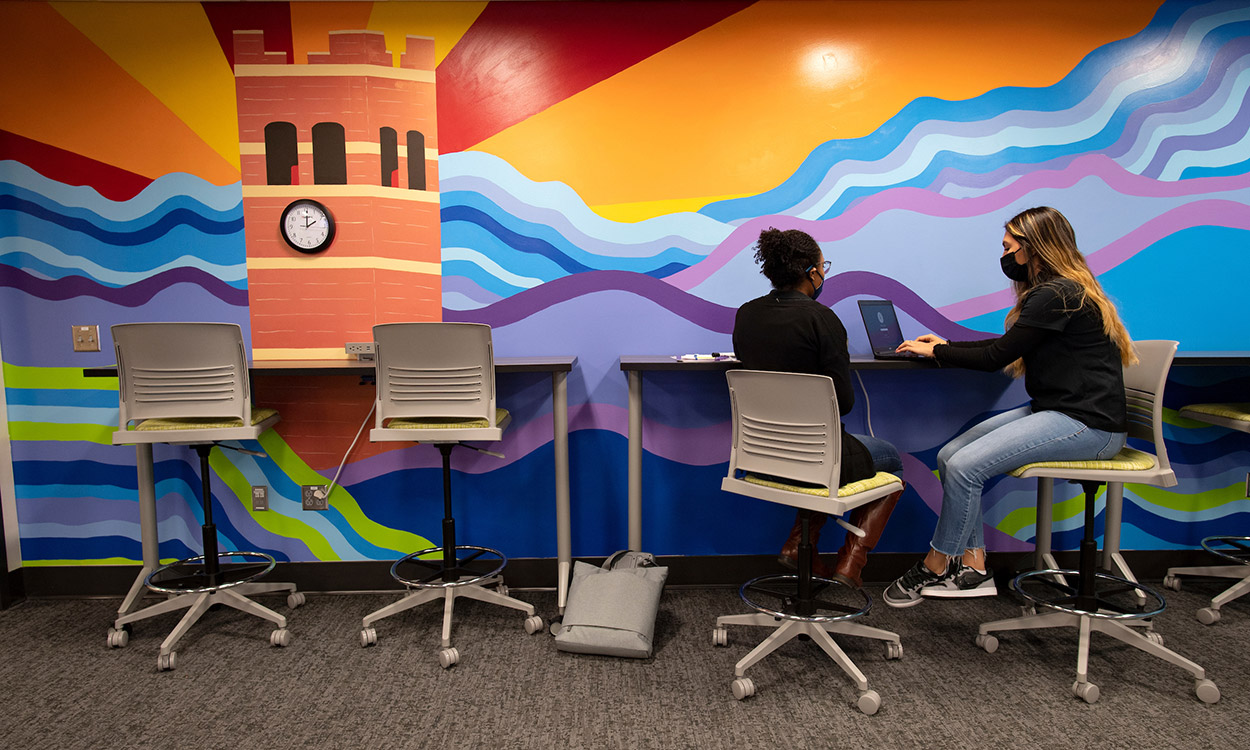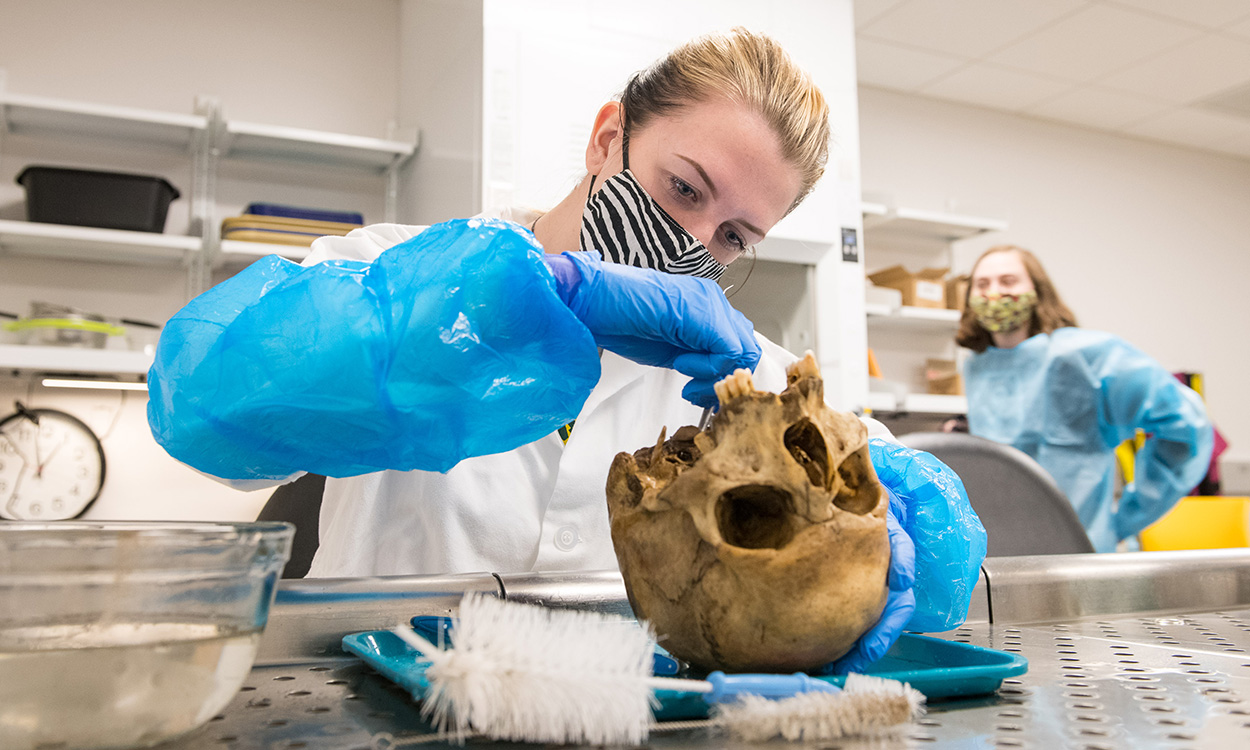Engineering students collaborate to design and build a solar tracking array
By Tom Lotshaw
From left to right, engineering students Roberto Estrada, Zachary Kielbasa and Stephanie Chavez Cardenas.
For a junior design class, three engineering students at Western Carolina University built a solar tracking array. The device finds and tracks the sun to keep solar panels optimally aligned with it as the Earth rotates.
North Carolina is a leading state for solar panel installations and such devices can boost the amount of energy generated. That’s because panels are most efficient when precisely aligned with the sun.
Engineering students Roberto Estrada, Stephanie Chavez Cardenas and Zachary Kielbasa said they modeled their solar tracking device after the Parker Solar Probe NASA launched in 2018 to observe the sun.
The probe has a reflective shield to keep it from being destroyed within a matter of seconds by the sun’s powerful radiation. Sensors installed along the probe detect light and help the probe reposition itself as needed to remain safe in the shield’s shadow.
The students’ solar tracking array similarly uses a series of smaller solar panels positioned behind the device’s main solar panel array, Kielbasa said.
When the small panels come into direct sunlight, they create energy to power motors — one for vertical movements and one for horizontal movements. These motors move the main solar panel array back into optimal alignment with the sun. Once aligned, the shield casts a shadow on the smaller panels, removing power from the motors.
The students came to the design project from different engineering backgrounds. Kielbasa is studying electrical engineering while Estrada’s area of concentration is mechanical engineering and Chavez Cardenas is studying engineering technology.
After developing a workable strategy for the device, the students designed and 3D printed many of its parts, including a counterbalance needed to offset the weight of the main solar panel array. They tried to keep the device as simple as possible from a production-cost standpoint.
“I feel like we worked well together. There were a lot of skills we could bring together,” said Chavez Cardenas, who is from Asheville.
Each of the students said they prefer the collaborative, project-based learning that is a core part of engineering studies at WCU. “I think these kinds of courses are essential to reinforcing our knowledge,” said Kielbasa, who is from Florida’s Space Coast and served six years in the Air Force.
The device earned top marks in the junior design class taught by mechanical engineering professor Martin Tanaka, who spent 11 years designing commercial products in the private sector.
It is now giving demonstrations to Estrada’s family in Hillsborough.
“I wanted to show it off to them, to show them this is what I’m doing at Western,” Estrada said of the solar tracking array. “We left it outside to show them. They’d check back every hour and see the panels facing a different direction. They thought it was very cool.”

